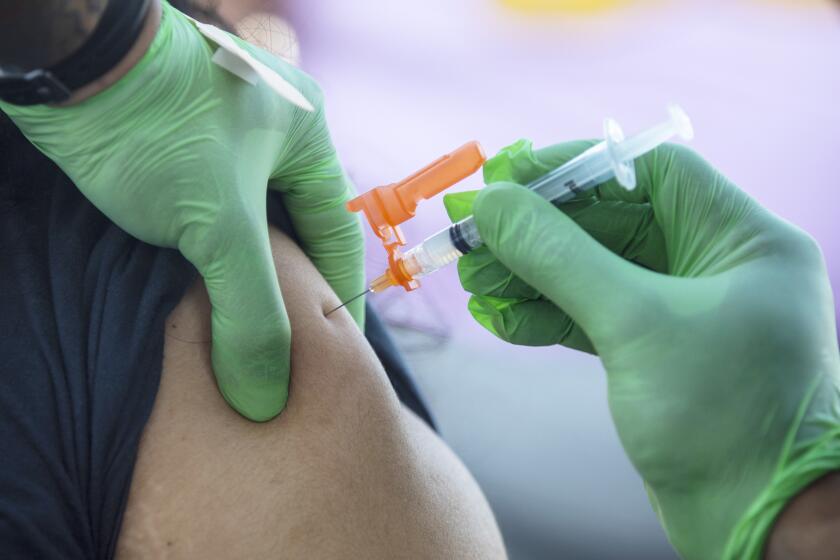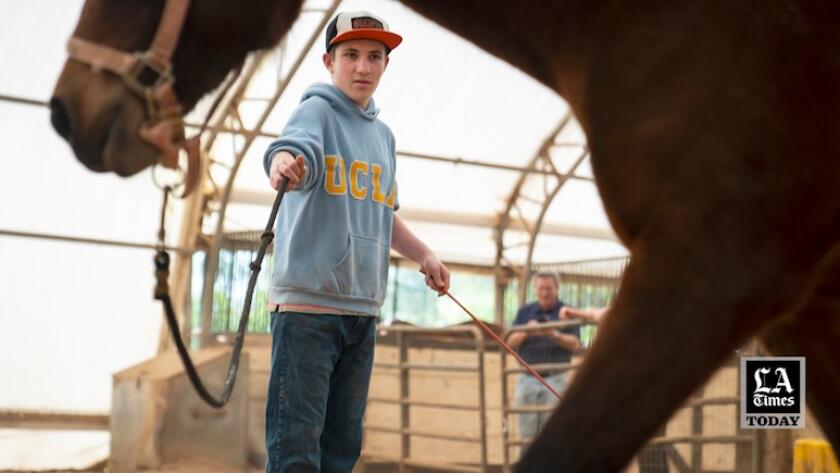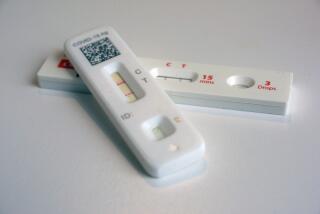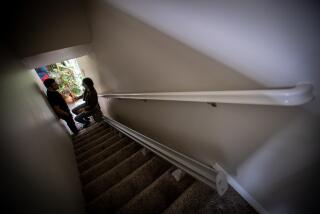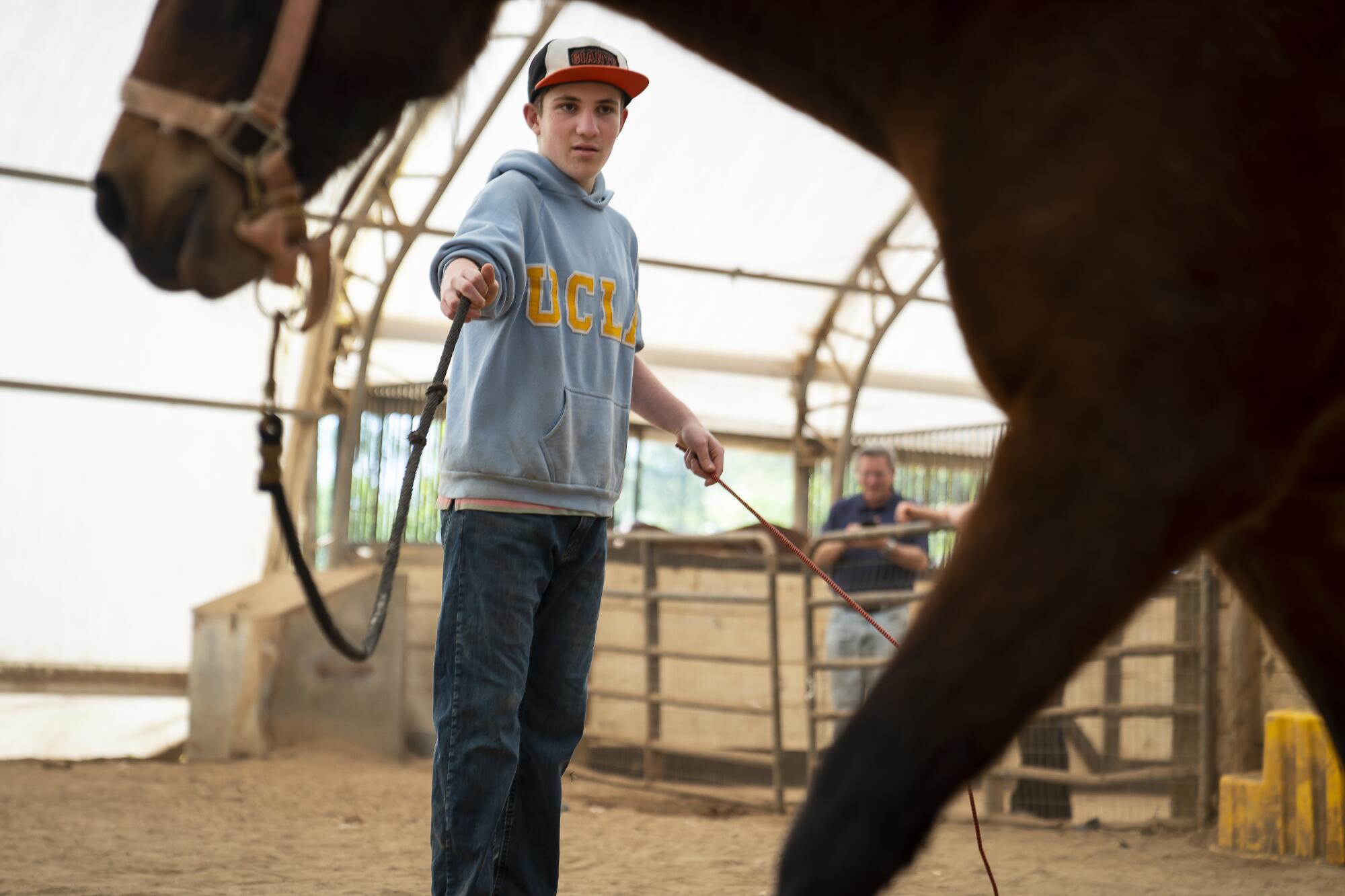
- Share via
Week after week, 13-year-old Ami Korn holed up in his Tarzana bedroom with his dog, Barley, to isolate after testing positive for the coronavirus, waiting for the nagging headache and earaches to dissipate.
“I just thought I was going to be fine,” Ami, now 14, recalled. “Most kids were fine.”
Instead, the teen grew sicker. He suffered nausea and dizziness, headaches, lung inflammation, body aches and fatigue. He struggled to walk a block without tiring. His parents shuttled him to doctor after doctor for help.
Korn ended up missing much of eighth grade as he continued to endure long COVID — a phenomenon in which symptoms persist for weeks, months or longer after a coronavirus infection.

More than a year later, Ami has regained his physical strength and is back to playing baseball, rebuilding his endurance on the field. He and his parents credit his work in cardiopulmonary rehab, along with acupuncture, medication, vitamins and other therapies. But at school, he is still grappling with brain fog and struggling with his faltering memory.
He once prided himself on his recall but now comes up empty when asked about things that came up in class just days before. “I could remember that I went to math class on Monday,” he said. “But I couldn’t remember what I learned.”
Children and teens have been less likely to suffer severe illness from COVID-19 than adults, but health officials have cautioned that young patients can still be afflicted by long COVID, which can cause a range of unsettling and potentially debilitating symptoms.
Researchers are getting serious about understanding a disease patients call “long COVID.” Its symptoms include aches, fatigue, sleep problems and brain fog.
Scientists are still working to understand why some patients suffer long COVID and to gauge how commonly it occurs. Estimates have differed depending on how scientists define the condition, with some researchers putting the numbers around 10% of people infected with COVID-19 and others upward of 50%. The Centers for Disease Control and Prevention found in one study in Long Beach that 1 in 3 adult survivors of COVID-19 had at least one lingering symptom after two months.
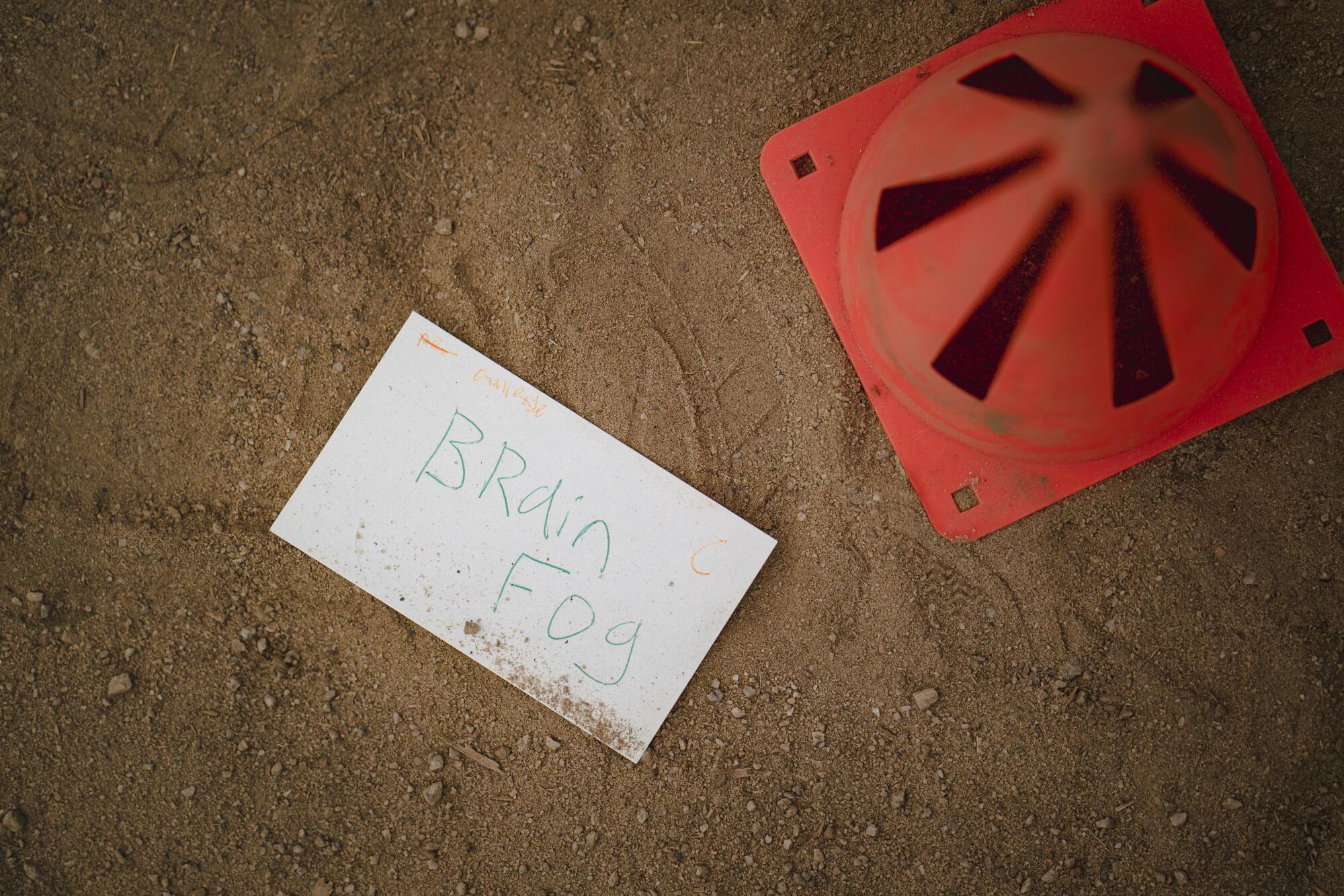
“We don’t know what, exactly, biologically causes it. We don’t know how to prevent it. And we don’t know how to treat it,” Dr. Michael Peluso, an assistant professor of medicine at UC San Francisco, said at a recent presentation on long COVID.
Trying to give any guidance on the phenomenon has been “like fixing the engine while the plane is flying in the air,” said Dr. Lawrence C. Kleinman, professor and vice chair of the pediatrics department at Rutgers Robert Wood Johnson Medical School, who is among the investigators examining long COVID in kids through an initiative funded by the National Institutes of Health.
Research on kids and long COVID has generally been thinner than on adults. Kleinman said that for many of the questions that preoccupy parents — including whether any particular factors can put children at higher risk — “we just don’t know yet.” Beyond the known symptoms, he wants to understand whether long COVID affects their development in other ways.
In December, several scientists lamented in the Pediatric Infectious Disease Journal that many existing studies on long COVID in children and adolescents lacked a control group, making it hard to tell whether symptoms were from COVID-19 or pandemic stresses.
In Britain, one recent study attempted to tease that out by comparing the reported symptoms among thousands of kids ages 11 to 17 who had tested positive for COVID-19 months earlier to thousands of other kids who had not. Kids in both groups reported exhaustion, headaches and other symptoms, but those who had gotten COVID-19 three months ago were more likely to have three or more symptoms, according to the study published in the Lancet.

Brain imaging studies in Britain have shown measurable changes in the brains of adults who have been infected with COVID-19 — even when examining patients who were never hospitalized. Exactly what that means for younger people, whose brains normally undergo profound changes as they mature, is still to be seen, said Elaine F. Walker, who directs the Mental Health and Development Program at Emory University.
Walker said that viruses have long been known to cause inflammation in the brain, something that can lead to neurological symptoms. At the same time, adolescents have also been coping with the disruptions and anxieties of the pandemic whether or not they themselves got COVID-19 — all layered onto the elevated stress hormones of adolescence.
“It’s very hard to disentangle that in the case of a single patient,” Walker said. “What we can do, though, is look at their performance on cognitive measures — or even the results of an MRI — before and after infection.”
Parent advocates have pushed for more attention to the issue. Helen Goss, a senior lead representative for the advocacy group Long COVID Kids, said that too often “we’re stuck with unfortunate and unhelpful debates about prevalence in children, when we should be focusing on how to support them.”
Dr. Vanessa Wu, a physician with the UCI Health COVID Recovery Service, said her adolescent patients with long COVID have suffered ongoing symptoms, including brain fog, fatigue, gastrointestinal issues and breathing problems. The range of symptoms can be so vast that “long COVID is probably a bucket term that is too broad.”
Some also face worsening anxiety or volleying moods, which leads to a “chicken and the egg” question, Wu said. “Are people anxious and depressed because of all their other symptoms and how that’s impacting their everyday life — or is it also part of their long COVID?”

Ami Korn first became infected in January 2021. When it became clear that he was not recovering, his parents, Ze’ev and Linda, began to comb the internet for information and emailed doctors.
“Nobody knew anything at the time,” Ze’ev Korn said, “so we just started doing a lot of research.”
The Korns stayed up late and learned about “COVID long haulers” whose symptoms had not disappeared. They found Facebook groups for people enduring the condition. They scheduled Ami for appointments with one doctor after another. Ze’ev estimated that the teen had more than 50 doctors’ appointments within seven months.
At one point, Ami was sleeping 12 to 16 hours a day, he recounted. Even padding the few steps from his bedroom to the kitchen sent his heart rate shooting upward. Baseball was an impossibility. He stopped hanging out as often with friends.
It feels now, he said, like he lost eight months of his life. Around five months into his illness, he was amazed and thankful to be able to walk a block, even though it exhausted him. The next week, he walked two. He started cardiopulmonary rehab alongside patients in their 70s and 80s, exercising with a treadmill and stationary bike as his heart rate and oxygen levels were monitored.
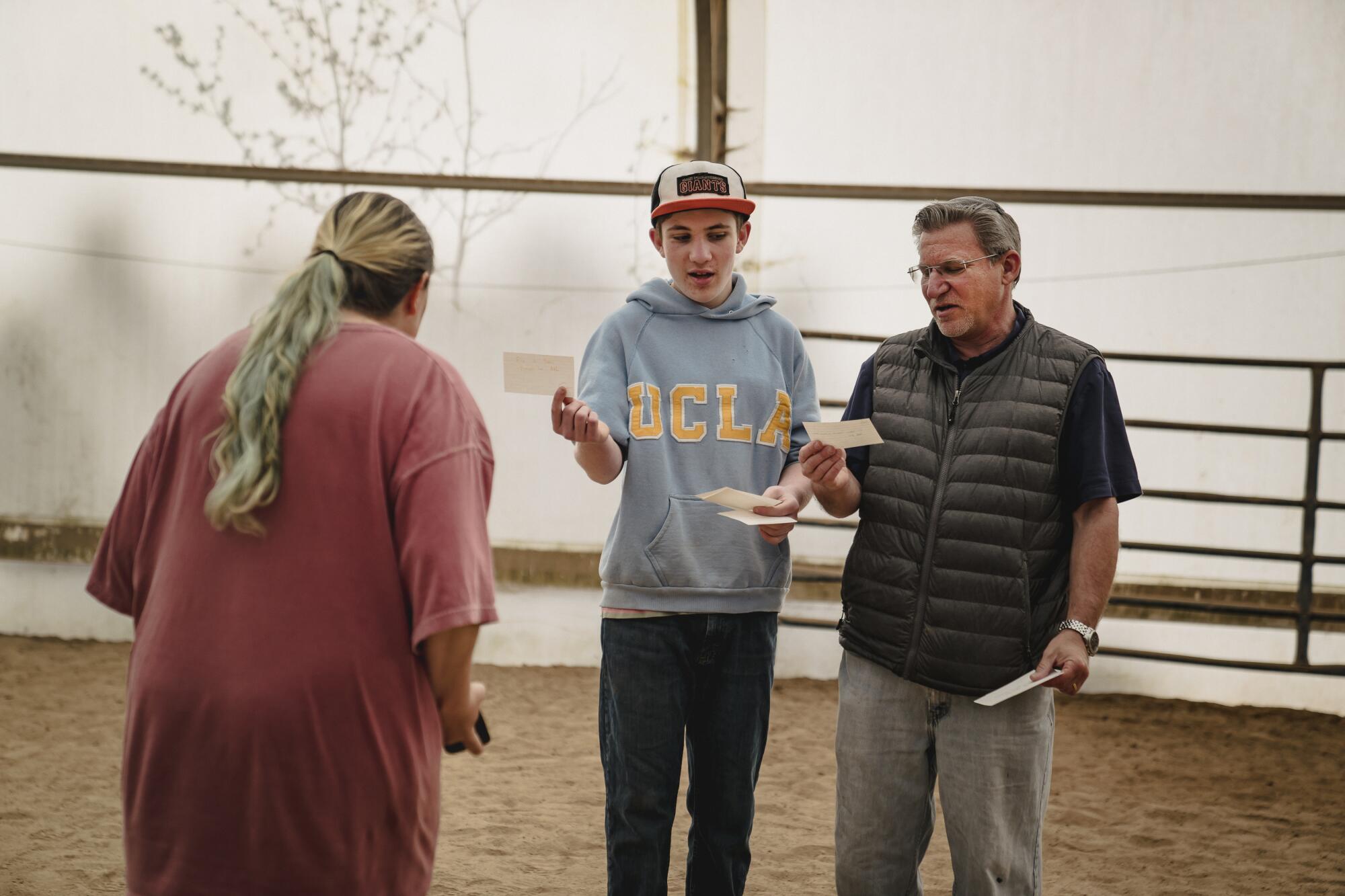
Getting vaccinated against COVID-19 also seemed to help him, his father said. By the fall, Ami felt much better physically and was excited to return to private school in Los Angeles.
But at home each night, Ami began to suffer panic attacks before falling asleep. His family believes it was tied both to the stress of what he had gone through, as well as to ongoing anxiety about others ignoring COVID-19 safety recommendations and going maskless at school. A few kids coughed on him on purpose, his father said.
The family relocated to the Atlanta area to attend a school where they felt better about safety protocols, easing those anxieties. But when Ami began school again, he realized that, “I’m not all better.”
Here is how the teen explains it: He can sit attentively in English class on Monday and learn about independent clauses, but when he returns to the same class on Wednesday to learn about complex clauses, he has forgotten what makes up an independent clause. He can learn how to do a math problem one day, then struggle to remember it a few days afterward.

“What am I supposed to do on tests?” he asked.
Ami, who had a schedule spangled with honors classes, now expects to repeat the ninth grade. He and his parents decided to cut back on his schoolwork, paring his schedule to two classes.
The family has been seeking neuropsychological and psycho-educational assessments to help figure out what the future of his schooling might look like. The teen had resisted the idea for a while.
“I hated the idea of accommodations,” he said. It was “another way of me admitting to myself, ‘OK, I need something that I didn’t need before.’ ”
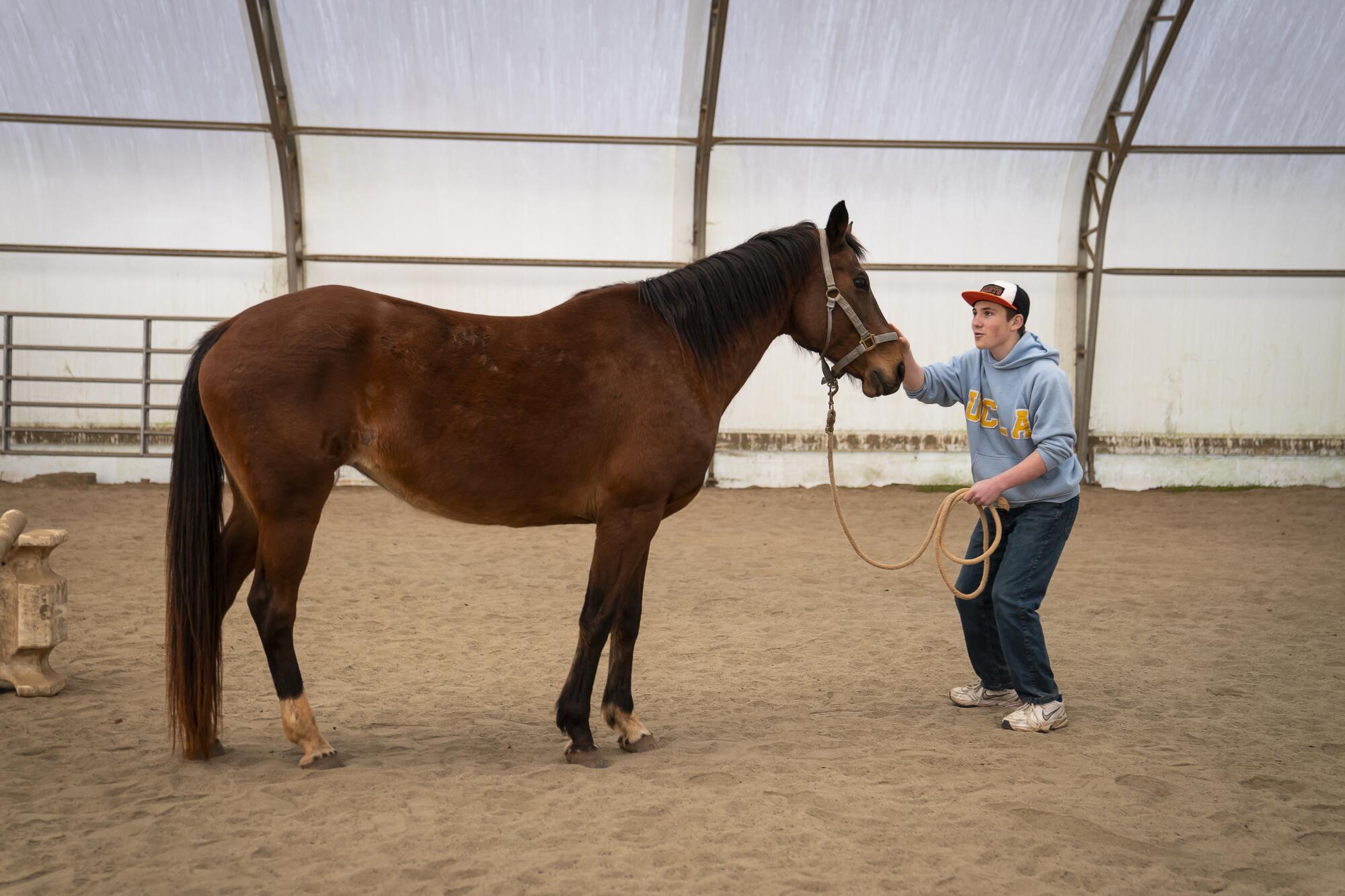
Disability advocates have called the pandemic a “mass disabling event.” The federal government has recognized long COVID as a disability under the Americans With Disabilities Act if the condition limits any “major life activities” — a broad category that includes walking, thinking, sleeping and bodily functions. But advocates say that much more awareness is needed to ensure access to disability accommodations and services.
These long COVID patients reported at least one symptom of COVID-19 two months after first testing positive for the coronavirus, the CDC study says.
“As a country, that is not something we have historically done well,” said Rebecca Cokley, U.S. disability rights program officer with the Ford Foundation. To address the emerging need, “we need to see an unprecedented level of investment in our current social safety net across the board,” including in the education system.
Cokley added that for many patients, long COVID mirrors the symptoms that people have experienced with myalgic encephalomyelitis, also known as chronic fatigue syndrome. Those patients, she said, historically “have been told that their symptoms are all in their heads.”
The Korns have been fortunate in many ways. Ze’ev Korn, who had been working as a psychotherapist at UCLA Health, was able to reach out to others in the health system for help. Linda was able to take a month off from work as an audiobook producer to help coordinate Ami’s care. And Ami said his doctors did not discount his symptoms, a common complaint among long haulers.
But they struggle to explain what is going on to other kids and families. “It’s not something you can see, like a broken arm or a broken foot,” Linda Korn said. “It’s very hard for people to understand.”
A doctor recently told them it would dissipate with time, Ze’ev Korn said. The Korns hope that is the case. But with so little known about the illness, Ze’ev said, they need to figure out how to best support Ami now.
In the Atlanta area, Ami has been going to Flying Change Equine Therapy to help raise his spirits and structure his time. He feeds and brushes the horses and works with Mercedes, a young horse who was sickened almost a year with pneumonia.
The teen said he is thankful to wake up each morning, mindful that other kids have not survived COVID-19. He is grateful that he can run again.
“And I’m grateful that my brain is as well as it is,” he said, “even though I want it to be better.”
- Share via
Watch L.A. Times Today at 7 p.m. on Spectrum News 1 on Channel 1 or live stream on the Spectrum News App. Palos Verdes Peninsula and Orange County viewers can watch on Cox Systems on channel 99.
More to Read
Sign up for Essential California
The most important California stories and recommendations in your inbox every morning.
You may occasionally receive promotional content from the Los Angeles Times.
